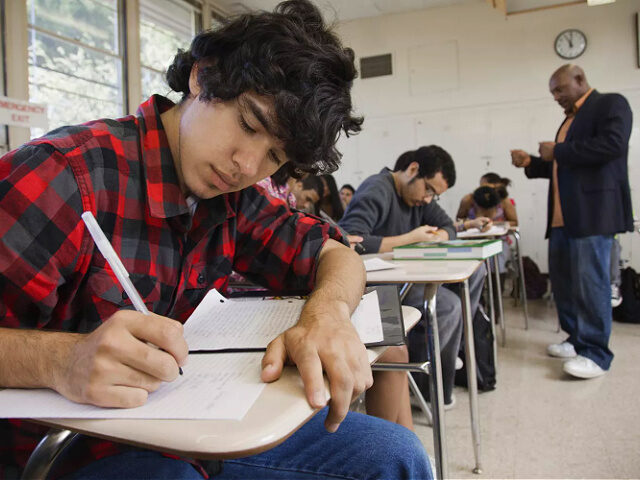A Chicago-area school district is being blasted by civil rights attorneys over racially segregating some classes in order to boost minority students’ scores.
The attorneys called the program “unconstitutional.”
Illinois’ Evanston Township High School offers the AXLE (Advancing Excellence, Lifting Everyone) program for black students, and the Ganas program for Latino students. Both programs offer separate math and English seminars to each group.
“There is no way that could possibly pass legal muster if someone sued,” legal expert David Bernstein told the Washington Free Beacon on November 29, citing the Fourteenth Amendment to the United States Constitution, which guarantees everyone “equal protections under the law.”
The landmark Supreme Court case Brown v. Board of Education concluded that the Constitution prohibits racial segregation in schools due to its being inherently unequal.
Proponents of the AXLE and Ganas programs are arguing in favor of the segregated classes, pointing out that they are optional. However, white students are not even the majority of the school district, making up just 44 percent of the population, according to the New York Post.
The separate classes for black and Latino students provide “a different, more familiar setting to kids who feel really anxious about being in an AP class,” Superintendent Marcus Campbell told the Evanstonian in August.
He pointed to the Evanston Township school board’s pro-equity mission, which lists one of their goals as “Recognizing that racism is the most devastating factor contributing to the diminished achievement of students, ETHS will strive to eliminate the predictability of academic achievement based upon race.”
After outlets such as the Spectator called out the segregated programs in May, the district removed the rule against other ethnicities participating in the AXLE and Ganas programs.
Phrases like “This course is restricted to students who identify as Latinx,” and “This course is restricted to students who identify as [b]lack males,” displayed in course descriptions were quickly changed, with ETHS removing the term “restricted” and replacing it with “while open to all students, this option [sic] section of the course is intended to support students who identify as ‘latinx’ or ‘black,’” student newspaper the Evanstonian reported.
“That changed because what was written doesn’t reflect the practice,” Campbell told the Evanstonian. “It’s just not restricted. The courses are open to everyone.”
“If push came to shove and you look at the master schedule, and a kid needs calculus that period and there’s nothing else that works and that kid is white, of course we’ll put them in the affinity class,” he added.
There are now 105 students in the Ganas program, and 86 enrolled in AXLE courses, according to the Wall Street Journal.
“I feel like I represent me and not the whole black race in this AP class,” a student in the program said, calling it a “safe space” due to college-level courses in high school typically being “mostly white.”
A Ganas student also said the program makes her feel “accepted for the first time in a long time.”
A recent ETHS survey found that 56 percent of all students felt a “sense of belonging” at the school, reports Evanston Now.
The results split by race paint a slightly different story, however, with 62 percent of white students reporting a sense of belonging, compared to just 49 percent of black students.
Out of the freshman class of 2022, the survey found that 89.1 percent of students were on track to graduate, better than the statewide rate of 87.4 percent.
But while white students at ETHS scored “notably” better than the state average, Hispanic, Asian, and low-income students at the school scored lower than the statewide averages for their respective groups. Black ETHS students scored slightly higher than their counterparts at other schools, but still lagged behind white ETHS students.
While the segregated programs were put in place in order to close that gap, legal experts still say the program is a civil rights violation.
William Trachman, a former official in the Education Department’s Office for Civil Rights, argued that the Title IV law, which bans race discrimination in federally-funded programs, “does not distinguish between mandatory and optional activities.”
A “racial equity consultant” who used to work for ETHS also admitted it would be better if the program wasn’t there.
“The ultimate goal is not having an affinity section of algebra, it’s having no disparity,” Glenn Singleton told the Post.
For now black and Latino students are still underperforming
“Our black students are, for lack of a better word — and I hate using this word, but they are at the bottom and they are being outperformed constantly,” school board vice president Monique Parsons said at a meeting last month.
“It’s not good,” she said. “We’re always chasing this and trying to figure it out.”

COMMENTS
Please let us know if you're having issues with commenting.